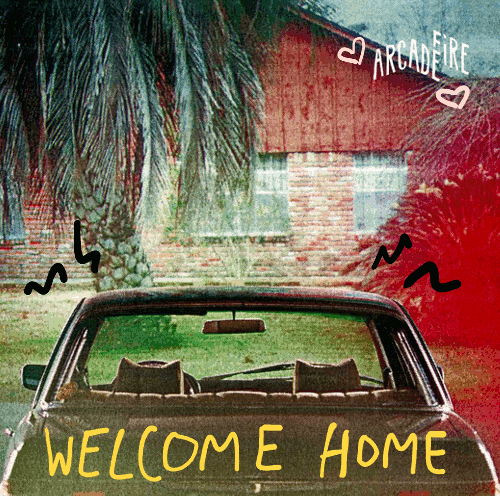Lately, I’ve been quite enamored of a certain street photographer by the name of William Eggleston. Simply, he was a prolific photographer of the 1970s who brought legitimacy to the colored photograph (whereas serious photography was heretofore only done in black and white). His brightly colored photographs feature mundane objects of American suburbia, such as street signs, diners, and cars.
Here are a few of his lovely photographs, expertly curated from Google images:
I think I was initially drawn to him because of the brilliant colors of his photographs (I am easily satisfied with colorful things and shiny things and all things simplistic and material) and the American iconography I so identified with. But something about his photography is very impersonal. I have not yet seen an Eggleston portrait. Humans are only allowed in the frame through fragmented pieces of the body, like with the woman’s arm stirring that cup on the plane. There are never faces. His take on suburbia only ever hints at human presence, never directly shows it; and Eggleston’s world seems to be left intentionally empty, materialistic, almost creepy.
I love it all.
This year, I’ve also been heavily influenced by a certain Arcade Fire album (look no further than the title of this post). I don’t know why I hadn’t listened to it very much before; I was quite familiar with Funeral and had liked it very much, but I had never really gotten around to becoming obsessed with their critically-acclaimed third album.

And I think it was the fact that I had left my home in the suburbs and moved across the country to Los Angeles for school that left a shameful (and shamed) part of me longing for…childhood, I guess. Or rather the environment I was surrounded by during my beloved adolescence. So I started listening to The Suburbs, though more closely the second time around, and realized that I absolutely identified with each and every song on the album.
I listened to it obsessively for weeks. It may have been months. I cried to it at least three times, which doesn’t really mean much for me, because I tend to cry over music, um, easily. The album voiced to me something that I had never really thought about before. I grew up in the suburbs; I would forever be impacted by the suburbs; I am one of millions of disaffected American Millennials who have become jaded with materialism, wandering throughout society without aim or purpose, doomed to live out an average existence plagued with personal and professional unfulfillment.
I feel very connected to “the suburbs.” It’s where I grew up. It’s made me the insufferable existentialist I am today. It’s ordinary and repetitive and homogeneous and empty and repressive.
And it’s beautiful.
As I’ve moved out of the suburbs for school, only coming back to it in the winter and summer, I’ve been able to take a more impersonal, analytic view on the role of suburbia with not only me but on American youth as a whole. I’ve had ideas floating in my head since the beginning of summer of a sort of photo diary, a documentation on motifs and symbols and themes and thoughts and feelings that suburbia evokes. I want to at once romanticize it, as we all do with our youth, and show the crueler, intentionally hidden side of the suburbs.
Obviously I am not the first one to have ever thought about the badness of suburbia; things like Edward Scissorhands and Malvina Reynold’s song “Little Boxes” come to mind.
Little boxes on the hillside,
Little boxes made of ticky tacky,
Little boxes on the hillside,
Little boxes all the same.There’s a green one and a pink one
And a blue one and a yellow one,
And they’re all made out of ticky tacky
And they all look just the same.And the people in the houses
All went to the university,
Where they were put in boxes
And they came out all the same,And there’s doctors and lawyers,
And business executives,
And they’re all made out of ticky tacky
And they all look just the same.
Yesterday I took my camera to “the streets” and started not necessarily photographing things that I felt evoked “suburbia” (because that is quite a daunting task for someone who knows next to nothing about photography) but rather things that I felt evoked “Eggleston.” It’s much easier to emulate greatness than to create something wholly original. I stayed close to my own home, driving around my street, taking special care to appreciate normal, ordinary objects I had always taken for granted.
(Obviously that lightbulb one is literally just plagiarism. I’M SORRY.) (I also took photos literally while driving, which was a very stupid idea, 100% do not recommend.)
I feel as though this motif of “suburbia” is going to stay with me for a while. As I leave my childhood, and my adolescence, and move into greater, bigger, mature-er adult things, I can’t help but feel nostalgic for home. My home in the suburbs. I want to capture the essence of the American suburb. I want to at once romanticize and capture its emptiness. And I want to speak to an entire generation in the same position as I am, like The Suburbs did.
I don’t know. I feel quite sad about having to grow up. Let me live in my childhood for a little longer.












